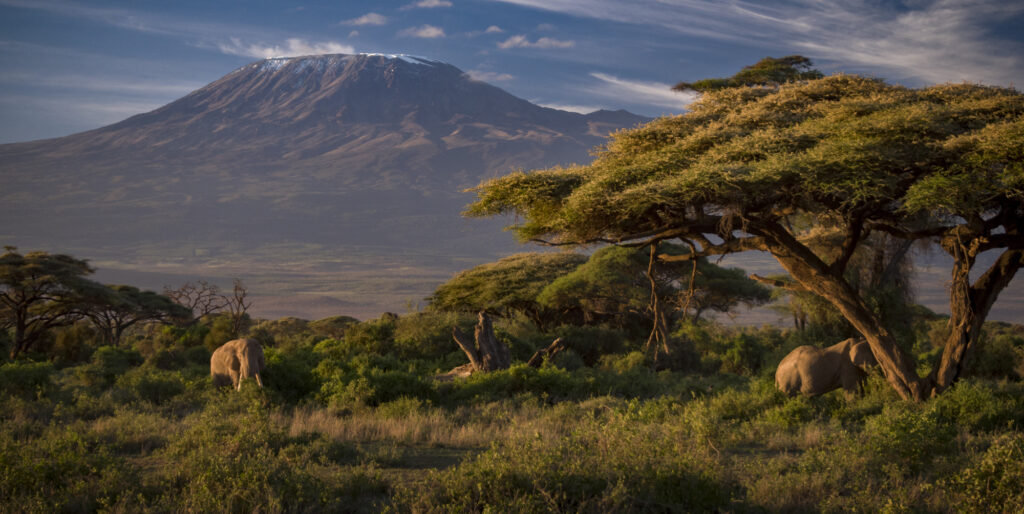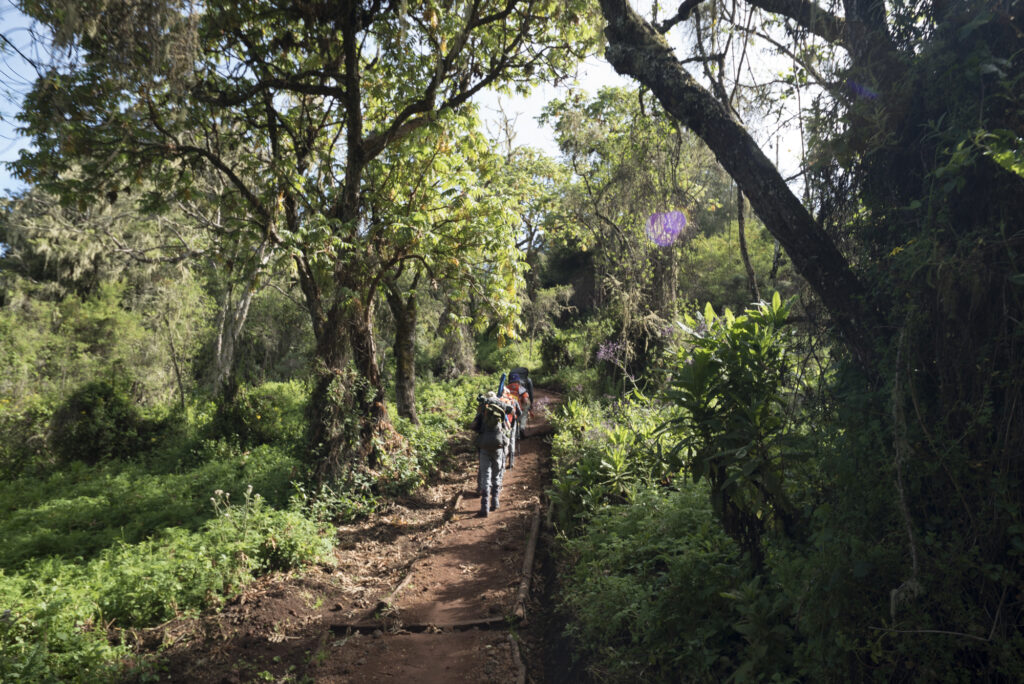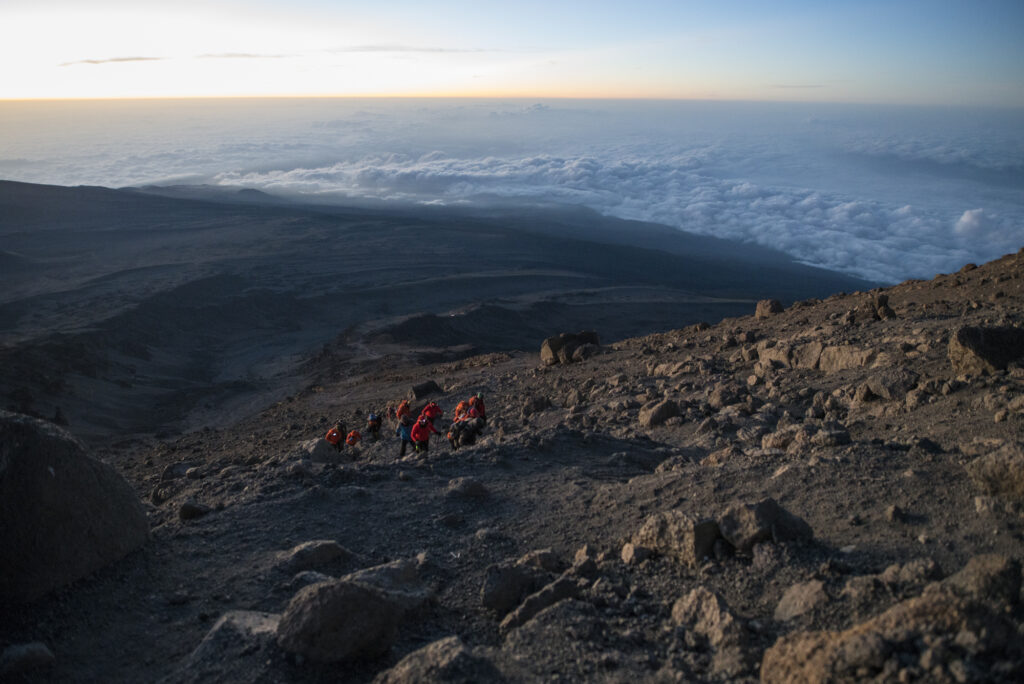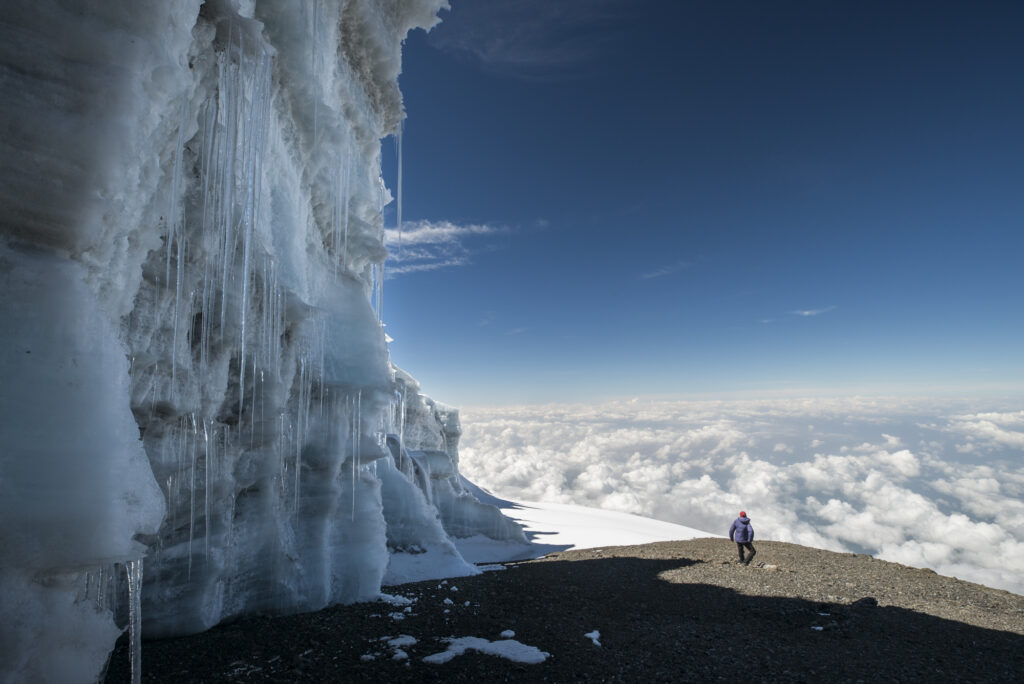
Climbing Kilimanjaro is an incredible adventure, but it’s important to be prepared and know what to expect. Firstly, Kilimanjaro is a unique mountain because it encompasses various ecological zones, from lush rainforests at the base to arctic-like conditions at the summit. Africa’s highest peak is known for its unique and diverse ecosystems that vary dramatically, so here is a quick overview of them.
Cultivated Zone (Up to 4,921 feet)

At the base of Kilimanjaro lies the cultivated zone, where local communities engage in agriculture. Here, you’ll find crops like maize, bananas, coffee, and other subsistence farming. Moshi, the town at the base of the mountain from which nearly every climb is organized, is also located in this zone. This zone experiences the highest rainfall throughout the year, with an average of 1,000-2,000 millimeters annually. The precipitation is relatively evenly distributed across the months, with slightly higher amounts during the long rains (March to May) and shorter rains (November to December) seasons.
Rainforest Zone (4,921 to 9,186 feet)

This lush zone is characterized by dense, tropical rainforests. The vegetation includes towering trees, ferns, mosses, and a wide variety of plants. Giant heather trees are a notable feature in this zone. Fauna in the rainforest includes mammals like blue monkeys, black and white colobus monkeys, and various species of duikers (small antelope). Birdlife is rich, with species like the Hartlaub’s Turaco, sunbirds, and the white-necked raven. This zone is also characterized by high rainfall, with an average of 2,000-3,000 millimeters per year. Like the cultivation zone, the rainforest experiences consistent precipitation throughout the year.
Heath/Moorland Zone (9,186 to 13,123 feet)

As you ascend, the forest gives way to heath and moorland. Here, the trees become shorter, and heather shrubs dominate. You’ll also encounter tussock grasses and alpine flowers. Wildlife includes rodents like the four-striped grass mouse and birds such as the Alpine Chat and the Rwenzori Turaco. The rainfall in this zone begins to decrease as you ascend. It averages around 1,000-2,000 millimeters annually. Climbers entering the heath zone, designated as the “high altitude” region in mountain medicine, reach a pivotal stage. It’s at this elevation that some may start experiencing the initial symptoms of acute mountain sickness. Routes typically lead into this zone on the second day of hiking. Depending on the duration of the chosen route, climbers may spend several days at this altitude. This approach is recommended as it allows for a gradual acclimatization to adapt to the reduced oxygen levels and the even higher elevations that lie ahead.
Alpine Desert Zone (13,123 to 16,404 feet)

Above the heath and moorland, the landscape changes to an alpine desert. This zone is characterized by rocky terrain, sparse vegetation, and gravel plains. Mosses and lichens are adapted to survive in this harsh environment. Due to the extreme conditions, very few animals are found in this zone. Insects like spiders and beetles, adapted to the cold, can still be found. This zone experiences a significant drop in precipitation. It receives an average of 250-500 millimeters of rainfall per year.
Arctic Zone (Above 16,404 feet)

The summit of Kilimanjaro, known as Uhuru Peak, is characterized by freezing temperatures, ice fields, and snow. This zone is reminiscent of an arctic landscape. Due to the extreme conditions, there is minimal vegetation and no wildlife. Only specialized microorganisms can survive at these elevations. The Arctic zone is characterized by very low precipitation levels. It receives only about 100-200 millimeters of rainfall per year, primarily in the form of snow.
It’s important to note that these are average values, and actual precipitation can vary from year to year due to natural climate variability. Additionally, Kilimanjaro’s climate has been affected by global climate change, which may lead to shifts in precipitation patterns over time. When planning a trek on Kilimanjaro, it’s crucial to be prepared for a range of weather conditions.
The mountain is a treasure trove of unique plant species, many of which are found nowhere else. Think giant groundsels, lobelias, and senecios, all specially adapted to thrive in this high-altitude haven. One superstar of Kilimanjaro is the Kilimanjaro tree, scientifically known as Dendrosenecio kilimanjari. It’s part of the giant groundsels family and adds a special touch to the mountain’s landscape.
As you climb, you’ll meet a whole cast of characters in the animal kingdom, each perfectly suited to their altitude. Monkeys, antelopes, rodents, and a colorful array of bird species call Kilimanjaro their home. While you might not spot elephants and buffaloes, they’re rare guests, mainly due to changes in their habitat caused by humans.
Let’s not forget the importance of keeping these ecosystems intact. Preserving Kilimanjaro’s natural balance is vital for the survival of these special species. So, as you explore this incredible mountain, remember, you’re not just a visitor, you’re a steward of this remarkable ecosystem!
After you pick a reputable outfitter for your expedition (Which is key!) and you’ve done your due diligence with preparing physically, mentally, got the right equipment and so on, you’re ready! Kilimanjaro expeditions are typically led by seasoned local guides trained in mountain safety. They’re experts on routes, altitude sickness signs, and offer invaluable support. Porters shoulder much of the gear, letting you concentrate on the climb.
Imagine standing at the top of Kilimanjaro, soaking in the most awe-inspiring views. On a clear day, you’ll witness the sprawling African plains below, and catch a glimpse of the Earth’s beautiful curve.
And let’s talk about that sense of accomplishment! Reaching Kilimanjaro’s summit is a monumental feat. It’s a demanding climb, but making it to the top is an experience that can truly transform your life.
Keep climbing high and reaching for the stars!







